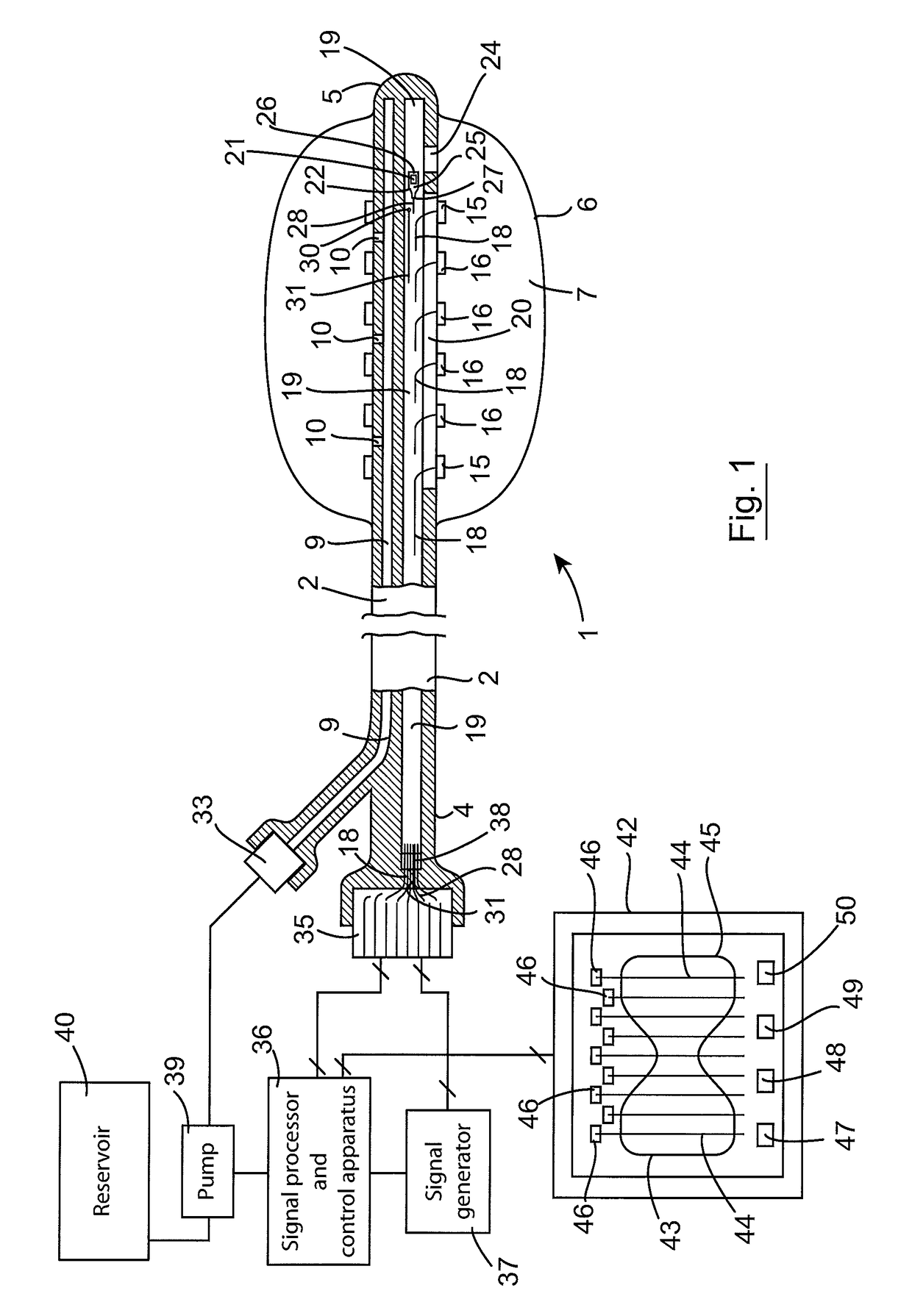Method and apparatus for forming a stoma and a balloon catheter
a balloon catheter and stoma technology, which is applied in the field of balloon catheters, can solve the problems of poor sensitivity with which the transverse cross-sectional area of the inflatable element can be computed, and the reading of the pressure of the inflating medium adjacent the proximal end of the inflating medium accommodating the lumen does not accurately represent the proximal end of the catheter,
- Summary
- Abstract
- Description
- Claims
- Application Information
AI Technical Summary
Benefits of technology
Problems solved by technology
Method used
Image
Examples
Embodiment Construction
[0155]Referring to the drawings and initially to FIGS. 1 to 7 thereof, there is illustrated apparatus according to the invention comprising a balloon catheter also according to the invention, indicated generally by the reference numeral 1 for accessing a remote site in a body of a human or animal subject. The balloon catheter 1 is particularly suitable for use in a method for forming a stoma in the stomach of a human subject and for monitoring the internal transverse cross-sectional dimension, such as the internal transverse cross-sectional area or diameter of the stoma during formation thereof. The formation of a stoma in the stomach of a human or animal subject will be described in more detail below. However, it will be readily apparent to those skilled in the art that the balloon catheter 1 may be used for many other purposes, where it is desired to determine a value of a transverse cross-sectional dimension such as the diameter and / or the area of a lumen, a vessel, a sphincter o...
PUM
 Login to View More
Login to View More Abstract
Description
Claims
Application Information
 Login to View More
Login to View More - R&D
- Intellectual Property
- Life Sciences
- Materials
- Tech Scout
- Unparalleled Data Quality
- Higher Quality Content
- 60% Fewer Hallucinations
Browse by: Latest US Patents, China's latest patents, Technical Efficacy Thesaurus, Application Domain, Technology Topic, Popular Technical Reports.
© 2025 PatSnap. All rights reserved.Legal|Privacy policy|Modern Slavery Act Transparency Statement|Sitemap|About US| Contact US: help@patsnap.com



